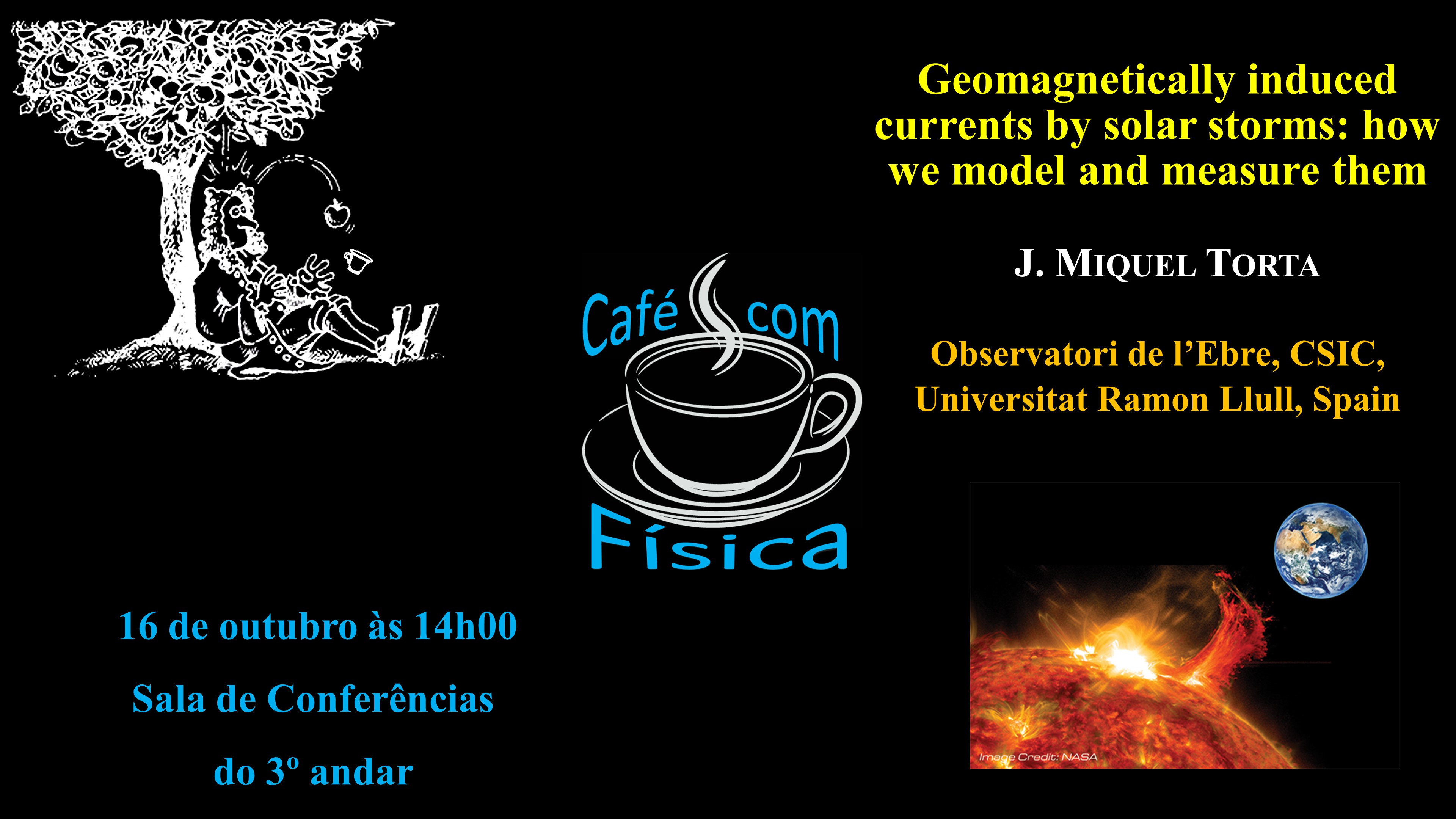Café com Física
Geomagnetically induced currents by solar storms: how we model and measure them
by
→
Portugal
Sala de Conferências (Departamento de Física)
Sala de Conferências
Departamento de Física
Universidade de Coimbra
Description

The electric currents induced in the modern technological systems generated by geomagnetic storms (known as geomagnetically induced currents or GICs) can disrupt or damage the transformers of the high voltage power grids. Such harmful effects have been usually observed only at high geomagnetic latitudes (such as in Canada or Scandinavia). Nevertheless, some transformer failures were even reported in South Africa on the occasion of the Halloween storms of 2003. This fact has encouraged several research groups and agencies to initiate vulnerability assessment studies on power grids located at regions previously considered to have low GIC-risk. To derive the geoelectric field several strategies can be followed. When geomagnetic field variations are obtained sufficiently close to the location where GIC is computed and the characteristics of the source currents are fairly uniform (such as it is the case at a mid-latitudinal region), a simple model which considers a plane wave primary field that propagates vertically downwards, and the Earth with a uniform conductivity, has been shown to be a very reasonable approach for GIC computation. As regards the method for calculating the currents in the earthed conductor network, a matrix based approach, which is based on Ohm’s and Kirchhoff’s laws, can be straightforwardly applied, because both the electric field and currents can be considered time-independent in comparison with the 50 Hz mains. An assessment of the GIC vulnerability across the entire Spanish power transmission system will be presented. To assess the maximum expected GICs in each transformer as a consequence of extreme geomagnetic storms, post-event analysis of data from the Spanish geomagnetic observatories during either the 1989 “Quebec” or the 2003 Halloween storms are performed, although other episodes coincident with very abrupt storm onsets, which have proven to be more hazardous at these mid-latitudes, are analyzed as well. In addition, Ebro Observatory digital geomagnetic data are used to know statistical occurrence probability values to derive the GIC risk at 100-year or 200-year return period scenarios. To improve the modelling, magnetotelluric measurements of geomagnetic and geoelectric field variations obtained from temporary deployments of sensors at individual geographic locations, can be expressed as empirical impedance tensors. Aimed at improving our previous analyses on the threat posed by GIC to the Spanish 400 kV grid, we have also undertaken a critical review of the existing MT data and models and created a new 3D lithospheric-scale model for the entire Iberian Peninsula, in order to obtain the impedance tensor at any point, in particular at each point of a regularly distributed grid. Using the observatory measured geomagnetic field variations to estimate GIC both in the power lines and in the substation transformers, the interpolated geoelectric fields from that grid are integrated along power-lines, to obtain the necessary line voltages. The match between the model predictions and actual GIC measurements are analyzed in the neutrals of a couple of transformers, but also by comparing those predictions with the real current flowing along power lines, under which we are measuring the GIC by performing differential magnetometric measurements.
Organised by
Filipe Veloso e Pedro Costa
